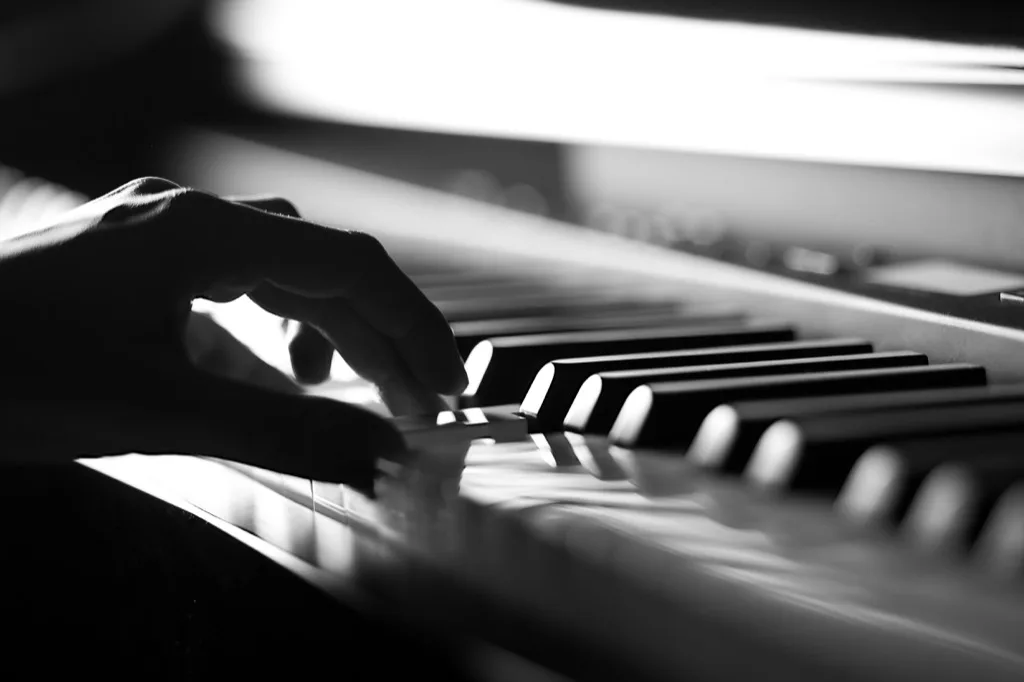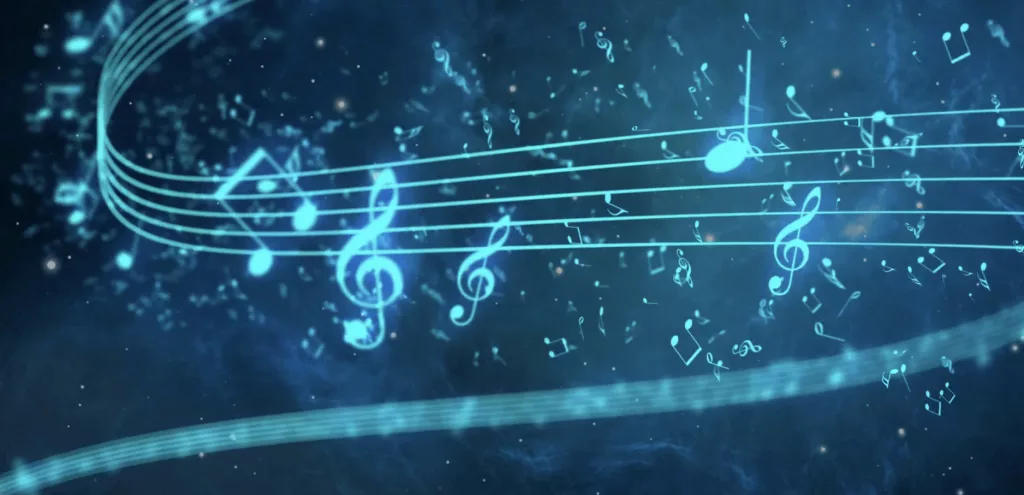1John 2:15-17
The term contemporary simply means “in the present”. The contemporary music is the music of the present. It is the music of this present age, full of corruption and vices.
The believer’s stand regarding contemporary music is non-conformity, because of the pollution that has infiltrated the entertainment industry. To this folks music is simply is just for entertainment, and nothing more. And any form of compromise will undoubtedly attract damnable consequences. It is clearly stated, “Love not the world, neither the things which are in the world”. Another passage boldly persuades us to “be ye not unequally yoked together with unbelievers” (2Cor. 6:14). Contemporary Music composed by an unbeliever is the music of the world. And it must be avoided at all cost. For no clean thing can come out of the unclean (Job 14:4).
Music is a gift -a good and perfect gift- come from God to his creation (James 1:17). Angels, man, and animals all show some inclinations to music. Thevwhole of nature blends in perfect harmony. All move with a common rhythm, and resonate with a Melody the greatest minds cannot fathom.
Over the years, music has greatly evolved. This evolution brought in drastic changes in the style of composition and performance as well. Through different periods in Western music history -from prehistoric to the modern period- we could witness some kind of revolution that effected the change in musical idioms, philosophy and ideology.
Music generally can be classified into: SACRED and SECULAR music. The former is music dedicated for Church use. Which involves the use of the Psalms, hymns, and spiritual songs, for the uplifting and edifying of true worshippers (Col. 3:16). While the latter refers to any kind of music used in the secular world for the purpose of entertainment and education. Thus, the primary purpose of music is edification and education; entertainment and enlightenment.
Interestingly, it is noteworthy to know that:
*Music is dual in nature: sacred and secular;
*Each has dual function: edification and education (Sacred music); entertainment and enlightenment (Secular music).
*Music can be vertically (God-ward) or horizontally (man-ward) oriented.
Consequently, there are a lot of malfunctions in the music of this very age. And these malfunctions -being allowed into Church music- have grossly negate the atmosphere of true worship during fellowship and worship services. It’s quite unfortunate that most Christian assemblies have no sense of true worship as elements of secularism have have subtly infiltrated Church music.
Three (3) sub-headings to be considered:
1. Demonic Elements and Contemporary Music
2. Discerning Edifying and Destructive Music
3. Dangers of Christian Contemporary Music.
Point 1. Demonic Influence In Contemporary Music:
Rev. 12:12;
The four basic elements (or characteristics) of music are: pitch, melody, rhythm, and harmony. These four are the pillars of any musical composition. And the fifth is lyricism -when it involves a vocal part. From these we can carefully discern demonic influence in contemporary music.
We shall consider these one after the other:
#Pitch:- is the height or depth of sound. In most contemporary music, there are various sounds that tend to mimic demonic utterances. This is done either by the instrument(s) or voice. Some of these screams and shouts have been discovered in the music of most popular artistes. Michael Jackson, Usher Raymond, and some other well-known pop artistes, are known to making such sounds in their music. The instrumentalists also mimic this strange utterances.
The famous Italian violinist Niccolo Paganini, goes into history as the all-time best Violinist. It is reported of him to have sold his soul to the devil for Violin playing. His “twenty-four Caprices” are the most difficult works ever written for the Violin. Incidentally, one of his 24 Caprices portrays the story of the pleasure the devil derives when afflicting his victims. The piece was nicknamed “the devil’s chuckle”.
Another work of this nature is Giuseppe Tartini’s “Violin sonata in G minor”. I will speak more on that in the next point.
#Melody: is the sequence of single notes that is musically satisfying. Melody simply means a tune. Melody is the thread that weaves a musical fabric. And it is the most challenging to create or invent in music composition. Hence, various composers over the ages have had various means of drawing inspiration to compose music. And those that are more daring, employ the aid of evil spirits to be inspired.
Giuseppe Tartini wrote a piece for the Violin titled: “Violin sonata in G minor” which was nicknamed the “devil’s trill”.
His inspiration came as the result of a dream he had one fateful afternoon. Accordingly, he had dream. In that dream he found him giving lessons to the devil on the Violin. And subsequently he (Tartini) asked his pupil (the devil) to play him something to confirm if he had made progress while receiving lessons. Consequently, the devil took the instrument from him, and played something unimaginable. He woke up immediately and began scribbling in to his manuscript what he heard in the dream.
While on his deathbed, he lamented not being to document all he heard in that infamous encounter. And he regretted so bitterly, for his loss.
When interviewed, a well-known Nigerian highlife musician once confirmed that the inspiration behind one of his songs was an encounter with a marmaid at the Lagos bar beach, around 11:30pm. The song is titled “Guitar-boy”. And the artiste is Victor Uwaifo. You may know him.
#Rhythm:- is simply the movement of music. Music travels through a path. And rhythm is that path. There are different styles of rhythmic movements. There are also simple and complex rhythms.
Heavy drumming and syncopated beats (rhythms) are the common features of most contemporary music, like the rock, rock ‘n’ roll, disco, hip-hop, etc. These styles of rhythmic approach have their root in the ritualistic music of the heathens of the West and Central African, observing “rites of passage” and pagan worship. This cultural practices were carried along during the slave trade to the West and the Caribbeans. It gradually found its way into the Church when the black folks were converted. Their new found joy and spiritual freedom were often expressed by such forms of gyrations. Gradually, this found its way into the popular society as well via shows and concerts.
There is no doubt that these heavy metals and rhythms are demonic in nature and origin. A believer cannot accommodate this. And should I no wise put up with it.
#Harmony: the combination of simultaneously sounded musical notes to produce pleasing (or near-pleasing) effect.
Musicians could paint pictures or portraits with [musical] sound, like poets paint with words. Harmony is very critical to any musical composition. It can make or mar the music. Harmony depicts the scenes and portrays the pictures a composer conceived prior to composing his music. Harmony brings evokes strength and life to the words of a poet. It also brings the music to the climax, and evoke strange feelings from depths unknown.
Harmonic structure have been evolving down the years. At first only concords (perfect harmony) were allowed in the music of the early Church. The singing or playing of discords were seen as distraction to worship, and devilish. However, there are ears who are not satisfied musically until some 9th and 13th chords have been struck. And some are really bizarre in nature.
A drastic change occurred in the harmonic structure with the invention of the 12-tone scale system by Anton Schoenberg. This revolutionized the composition of music forever. The system explored the use of the tri-tone scale -a system of harmonic structure greatly abhorred and forbidden in early Church music. The interval of a flattened 5th was known as the “devil’s chord”. And it distracts worship. That is why it was forbidden. A service could instantly lose its atmosphere of tranquility and solemnity when this chord is played or sung. It is also very much sensual and fleshly appealing. This is the root of the modern harmonic vocabulary.
The discovery of the 12-tone row (as also called) marked the beginning of modern music. This discovery subsequently gave birth to other musical genres like blues, rhythm & blues (R&B), rock, rock ‘n’ roll, hip-hop, disco, salsa, etc., which combine heavy metallic rhythms and strange harmony in contrast to build a new world of sound, bizarre and troublesome.
Chaos, disorder, and confusion became the norm; nonsense began making sense; vices ruled and morality took its flight in the morning hours in to oblivion. This New World Order of musical ingenuity literally destroyed the already established musical structure, that emphasized on form (order) and beauty. It’s results are harmful behavioral practices, like hooliganism, gangsterism, prostitution, drug addiction, etc.
#Lyricism: the ability of an artist to use words to express his/her emotions in an imaginative and beautiful way.
Poor lyrics has been the greatest challenge of the 20th/21st Century Music. It is appalling to say its contents showed a great inclination towards vulgarism. And its theme is “Self and sensuality”.
Apparently, this kind of message has no place in the life of a Christian. As evil communication corrupts good manners (1Cor. 15:33). It dampens the fire and spirit of revival.
#Point 2: Discerning Edifying and Destructive Music:
Col. 3:16;
The Christian music is based on inspiration by the Holy Spirit, and rooted in the Scriptures. In the passage above, we find the fundamentals of Christian music: Psalms, hymns, and spiritual songs.
#Psalms:- the 150 Psalms (O.T), and any verse of the Scripture entirely set into music.
#Hymns:- songs of praise inspired by a paraphrased verse of the Scripture.
#Spiritual songs:- sons that narrate the experiences of our testimonies and Christian conviction (Rev. 12:11).
How to discern destructive music:
a. Nature of the vessel being used__Job 14:4; 2Tim. 2:19-21.
b. By their fruits _ Matthew 16:7
c. Sensuality __
d. Chaos and disorderliness __1Cor. 14:40
e. Worldliness, pride and arrogance
f. Carnality
g. Rebellion, witchcraft and sorcery.
h. Any music that deadens your inner-man.
#Point 3. Dangers of Christian Contemporary Music:
The Christian Contemporary music [CCM] is the version of secular music now existing in most Christian assemblies. Some congregation simply change the lyrics of songs composed by worldly artistes, and have them performed in the Church during services and special programs.
But does it make a difference, Havin the same tune, rhythm, harmony, but different lyrics? Yam is good to eat. But can that which is offered to a demonic spirit as sacrifice acceptable to be consumed simply because is not naturally harmful? Likewise that which is dedicated to idols a sacrilege if consumed.
The Christian contemporary music is mostly found among young people, who claim to feel bored by the hymn signing and chanting of canticles by the older generation.
Unfortunately, the Christian Contemporary [CCM] has done much harm than good to the Church of Christ. The spirit of anti-christ, the spirit of deception rules in the music industry of the world. This form of music (CCM) has promoted gross immoral act among so-called worship leaders and singers, Choirmaster and Choristers, etc.
The inevitable consequences of this are:
1. Loss of the anointing
2. Deadness in the Church
3. Loss of God’s glory in the fellowship
4. Spiritual barrenness -sinners and backsliders not getting converted in the Church
5. Unanswered to prayers -brazen heaven
6. Spiritual manipulation and demonic oppression
7. Eternal damnation.


